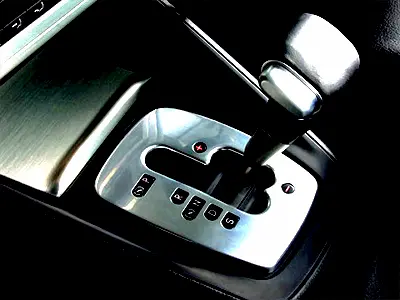
In winter, operation of cars with automatic transmission requires special attention and precautions. During this period, a number of recommendations must be followed to keep the gearbox in good condition. There are many types of automatic transmissions, but hydromechanical automatics are the most common and are considered reliable. These are the ones that will be discussed in this article.
The first step when operating an automatic transmission in winter is to warm it up. It is necessary to warm up not only the engine, but also the transmission before starting to drive. If you prefer to warm up in place, it is recommended to turn on the "drive" mode and hold the car under braking force for about half a minute. This will help warm up the oil in the gearbox faster. If you are warming up your vehicle while driving, you should avoid sudden acceleration when starting out when the engine and transmission are cold. It is advisable to continue driving at low speed and in a quiet mode for the first kilometer to allow the box to warm up. Sharp acceleration on a cold transmission can lead to a reduction in its service life. Ignoring the need to warm up a cold box in severe frost conditions can negatively affect its longevity, especially with regard to seals. Without warming up, the risk of lubricant leakage through seals and gaskets increases significantly. This may result in shorter service life and the need to replace parts more frequently. To avoid such problems, it is recommended to always warm up a cold box before using it in extremely low temperatures. In addition to warming up, it is also necessary to check the condition of the car battery.
Remember: Legendary models that have won the hearts of car enthusiasts
Towing is another important stage in operating an automatic transmission in winter. Such boxes are sensitive to towing, so several rules must be followed. First, do not exceed the maximum trailer weight specified in the vehicle manual. Secondly, it is not recommended to tow heavy vehicles. If you still had to tow a car with an automatic transmission, it is worth considering a number of restrictions. Often the instructions indicate the maximum speed at which a vehicle with a manual transmission can be towed. Also, sometimes the manufacturer sets a maximum distance over which the car can be towed. Skidding in snow is another problem that can be encountered in winter. If you are stuck in a snow hole in a car with an automatic transmission, it is not recommended to skid for a long time. With prolonged slipping, the oil in the box overheats, which can lead to damage to transmission parts. The best thing to do is try to dig out the car or ask for outside help to pull it out. It is also not recommended to tow a car on ice, since the shock loads from slipping and subsequent fixation of the wheels on the asphalt can negatively affect the operation of the automatic transmission. It is also necessary to remember about mechanical damage to the gearbox in winter. It is important to have metal protection for the engine and transmission to prevent damage when encountering obstacles on the road. It is not recommended to park in deep snow or allow large blocks of ice between the wheels to avoid damage to the housing or other parts of the transmission.
Remember: How to quickly and safely sell a car in Kyiv
Winter mode is a special operating mode of the automatic transmission, which is recommended for use when driving on slippery roads. It allows you to avoid wheel slipping and provide more reliable movement. Car manufacturers also recommend regular automatic transmission maintenance. Depending on the model and make of your vehicle, different oil change intervals may be specified. In some cases, the instructions indicate that transmission maintenance is not required. Still, it is recommended to change the oil at least once every 100-150 thousand kilometers. When changing the oil, it is advisable to also change the automatic transmission filter, if possible.
Proper operation of the automatic transmission in winter will preserve its performance and extend its service life. By following these recommendations, you can avoid costly transmission repairs and ensure your vehicle performs at its best during the winter.

